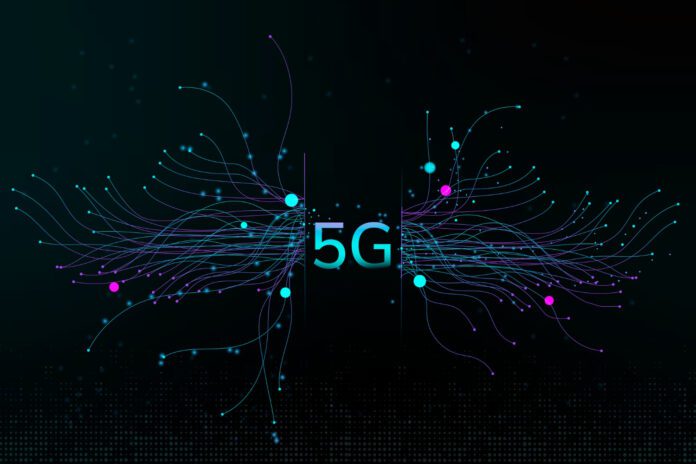The advent of 5G technology marks a significant milestone in the evolution of mobile networks, promising to transform connectivity worldwide. As the fifth generation of mobile networks, 5G is designed to provide unprecedented speed, capacity, and low latency, enabling a new era of digital innovation. This comprehensive post explores how 5G technology is reshaping industries, enhancing user experiences, and driving economic growth. From its technical foundations to real-world applications and future prospects, we delve into the details of 5G and its transformative impact on global connectivity.
Understanding 5G Technology
What is 5G?
5G, or fifth-generation wireless technology, is the latest iteration of mobile networks, succeeding 4G LTE. It offers significantly faster data speeds, greater bandwidth, and lower latency, making it possible to connect more devices and support advanced applications that were previously unattainable with older network technologies.
Key Features of 5G:
- High Speed: 5G networks can achieve data transfer rates of up to 10 Gbps, which is 100 times faster than 4G.
- Low Latency: Latency, or the time it takes for data to travel from one point to another, is reduced to as low as 1 millisecond.
- Massive Connectivity: 5G can support up to 1 million devices per square kilometer, enabling the Internet of Things (IoT) on an unprecedented scale.
- Enhanced Reliability: Improved reliability and stability for critical applications, such as autonomous vehicles and remote surgery.
The Technical Foundations of 5G
Spectrum and Frequency Bands
5G technology operates on a range of frequency bands, from low-band to high-band spectrum. Each band has its own characteristics and applications.
Low-Band Spectrum:
- Characteristics: Offers broad coverage and penetrates buildings well.
- Use Cases: Ideal for rural and suburban areas where wide coverage is needed.
Mid-Band Spectrum:
- Characteristics: Balances speed and coverage, providing faster data rates than low-band while still offering good coverage.
- Use Cases: Suitable for urban areas and high-density environments.
High-Band Spectrum (mmWave):
- Characteristics: Delivers ultra-fast speeds but has limited coverage and penetration capabilities.
- Use Cases: Best for dense urban areas and specific applications like stadiums and concert venues.
Network Architecture
5G networks utilize a new architecture that includes both non-standalone (NSA) and standalone (SA) deployments.
Non-Standalone (NSA):
- Description: Builds on existing 4G LTE infrastructure, enabling faster deployment.
- Advantages: Lower initial cost and quicker rollout.
- Disadvantages: Limited to enhancements on top of 4G capabilities.
Standalone (SA):
- Description: A completely new 5G infrastructure, independent of 4G networks.
- Advantages: Full realization of 5G benefits, including ultra-low latency and high reliability.
- Disadvantages: Higher deployment costs and longer rollout time.
Transforming Industries with 5G
Healthcare
5G technology is revolutionizing the healthcare industry by enabling remote diagnostics, telemedicine, and advanced medical procedures.
Remote Diagnostics and Telemedicine:
- Impact: 5G allows doctors to diagnose and treat patients remotely with high-quality video conferencing and real-time data sharing.
- Example: Remote consultations and follow-ups reduce the need for in-person visits, especially in rural areas.
Advanced Medical Procedures:
- Impact: Ultra-low latency and high reliability enable remote surgeries and real-time monitoring of critical medical equipment.
- Example: Surgeons can perform operations remotely using robotic systems controlled over a 5G network.
Manufacturing
The manufacturing sector benefits from 5G through enhanced automation, real-time monitoring, and improved supply chain management.
Enhanced Automation:
- Impact: 5G enables the use of smart factories with interconnected machines and automated processes.
- Example: Robotics and AI-driven systems improve efficiency and reduce downtime.
Real-Time Monitoring:
- Impact: Manufacturers can monitor production lines in real-time, identifying issues before they cause significant disruptions.
- Example: Sensors and IoT devices provide continuous data on machine performance and product quality.
Transportation and Logistics
5G technology is transforming transportation and logistics by enabling autonomous vehicles, smart traffic management, and efficient logistics operations.
Autonomous Vehicles:
- Impact: 5G supports the reliable and low-latency communication required for autonomous vehicles to operate safely.
- Example: Self-driving cars can communicate with each other and with traffic infrastructure to navigate efficiently.
Smart Traffic Management:
- Impact: Real-time data from connected vehicles and infrastructure allows for dynamic traffic management and reduced congestion.
- Example: Traffic lights and road signs can adjust in real-time based on traffic conditions.
Efficient Logistics Operations:
- Impact: 5G enables real-time tracking of goods, optimizing supply chains and reducing delays.
- Example: IoT sensors track the location and condition of shipments, ensuring timely delivery and reducing losses.
Entertainment and Media
The entertainment and media industry is experiencing a significant transformation with 5G, providing enhanced experiences for consumers and new opportunities for content creators.
Enhanced Streaming and Gaming:
- Impact: 5G offers faster download and upload speeds, enabling high-quality streaming and cloud gaming.
- Example: Users can stream 4K videos without buffering and play latency-sensitive online games seamlessly.
Immersive Experiences:
- Impact: Virtual reality (VR) and augmented reality (AR) applications are more accessible and realistic with 5G.
- Example: Live sports events and concerts can offer immersive VR experiences to remote audiences.

Enhancing User Experiences with 5G
Mobile Connectivity
5G significantly enhances mobile connectivity, providing faster internet speeds, better coverage, and improved reliability for users.
Faster Internet Speeds:
- Impact: Users can download large files, stream high-definition content, and enjoy seamless video calls with unprecedented speed.
- Example: Downloading a full-length HD movie takes just a few seconds on a 5G network.
Better Coverage:
- Impact: 5G networks provide more consistent coverage, reducing dead zones and improving connectivity in crowded areas.
- Example: Users can stay connected even in densely populated urban centers and remote rural areas.
Improved Reliability:
- Impact: Enhanced network reliability ensures that users experience fewer dropped calls and connection issues.
- Example: Reliable connectivity is crucial for applications like mobile banking and online education.
Internet of Things (IoT)
5G is a key enabler of the Internet of Things (IoT), supporting the connection of billions of devices and facilitating smart ecosystems.
Smart Homes:
- Impact: 5G enables seamless connectivity for smart home devices, from thermostats and security cameras to refrigerators and lighting systems.
- Example: Home automation systems can be controlled remotely with greater precision and reliability.
Smart Cities:
- Impact: Urban areas benefit from smart infrastructure, including connected traffic lights, waste management systems, and environmental monitoring.
- Example: Smart cities improve quality of life by reducing congestion, lowering energy consumption, and enhancing public safety.
Industrial IoT:
- Impact: Industries use IoT for predictive maintenance, asset tracking, and efficient resource management.
- Example: Manufacturing plants use IoT sensors to monitor equipment health and prevent breakdowns.
Driving Economic Growth with 5G
Job Creation and Economic Impact
The deployment and expansion of 5G networks are expected to create millions of jobs and drive significant economic growth.
Job Creation:
- Impact: Jobs will be created in network infrastructure, equipment manufacturing, and new industries enabled by 5G.
- Example: Roles in 5G network deployment, maintenance, and cybersecurity will see increased demand.
Economic Growth:
- Impact: 5G is projected to contribute trillions of dollars to the global economy by enabling new business models and efficiencies.
- Example: Sectors such as healthcare, manufacturing, and transportation will see productivity gains and cost reductions due to 5G technology. Enhanced connectivity can lead to the creation of new services and products, fostering innovation and competitiveness in the global market.
Overcoming Challenges in 5G Deployment
Infrastructure Development
Deploying 5G networks requires significant investment in infrastructure, including the installation of new antennas, base stations, and fiber optics.
Investment Needs:
- Impact: Governments and private companies must invest heavily in building the necessary infrastructure to support 5G.
- Example: Telecom companies are partnering with local governments to expedite the deployment of 5G networks.
Infrastructure Challenges:
- Impact: Urban areas face challenges related to site acquisition and regulatory approvals, while rural areas struggle with the high costs of deployment.
- Example: Innovative solutions such as small cells and distributed antenna systems are being used to overcome these challenges.
Security Concerns
As 5G networks become more widespread, ensuring their security becomes a critical concern. With the increased number of connected devices, the potential attack surface for cyber threats also expands.
Cybersecurity Measures:
- Impact: Implementing robust cybersecurity measures is essential to protect 5G networks from potential threats.
- Example: Network slicing, encryption, and secure authentication protocols are some of the techniques used to enhance 5G security.
Privacy Issues:
- Impact: Protecting user data and ensuring privacy is paramount, given the vast amount of information transmitted over 5G networks.
- Example: Regulatory frameworks and compliance standards, such as GDPR, help safeguard user privacy.
Regulatory and Policy Challenges
The global rollout of 5G faces various regulatory and policy challenges that must be addressed to ensure smooth implementation.
Spectrum Allocation:
- Impact: Governments must allocate appropriate frequency bands for 5G use, balancing the needs of different industries and ensuring fair access.
- Example: International coordination is necessary to avoid interference and harmonize spectrum usage.
Policy Frameworks:
- Impact: Creating supportive policy frameworks can accelerate 5G deployment and adoption.
- Example: Policies that incentivize investment in 5G infrastructure and streamline regulatory approvals can facilitate faster rollout.
Future Prospects of 5G Technology
Evolution Beyond 5G: 6G and Beyond
While 5G is still in its early stages, researchers and technologists are already exploring the next generation of mobile networks, known as 6G.
6G Vision:
- Impact: 6G aims to achieve even higher data rates, lower latency, and greater connectivity than 5G.
- Example: Potential applications of 6G include advanced holographic communications, pervasive AI, and immersive extended reality (XR) experiences.
Research and Development:
- Impact: Significant investment in research and development is required to realize the potential of 6G technology.
- Example: Collaboration between academia, industry, and government will drive innovation in 6G.

Expanding 5G Applications
As 5G technology matures, its applications will continue to expand across various sectors, driving further innovation and transformation.
Emerging Applications:
- Impact: New use cases will emerge in fields such as agriculture, environmental monitoring, and disaster management.
- Example: Smart agriculture powered by 5G can optimize crop management and improve yield through real-time data analysis and automated systems.
Sustainability and Green Technology:
- Impact: 5G can contribute to sustainability by enabling smart grids, energy-efficient buildings, and reduced carbon emissions.
- Example: Smart grids use 5G connectivity to balance energy supply and demand, reducing wastage and enhancing efficiency.
Conclusion
5G technology is poised to revolutionize connectivity worldwide, transforming industries, enhancing user experiences, and driving economic growth. From healthcare and manufacturing to transportation and entertainment, the impact of 5G is profound and far-reaching. As we overcome challenges related to infrastructure, security, and regulation, the future of 5G looks promising, with endless possibilities for innovation and transformation.
By understanding the technical foundations, applications, and future prospects of 5G, we can better appreciate its transformative potential and prepare for a connected world like never before. Embrace the 5G revolution and explore the exciting opportunities it brings to every aspect of our lives.
Useful Links
- Introduction to 5G Technology
- 5G Spectrum Explained
- 5G Network Architecture
- 5G in Healthcare
- 5G in Manufacturing
- 5G in Transportation
- 5G in Entertainment
- 5G and Mobile Connectivity
- 5G and IoT
- Economic Impact of 5G
- 5G Infrastructure Challenges
- 5G Security and Privacy
- 5G Policy Challenges
- The Future of 6G
- 5G and Sustainability
By following this guide and exploring the resources provided, you can gain a deeper understanding of how 5G technology is transforming connectivity worldwide and prepare for the exciting future it promises.



